CSC/ECE 517 Fall 2009/wiki 1a 9b SJ
What is Code Refactoring
According to the famous book "Refactoring: Improving the Design of Existing Code " by Martin Fowler: [5], refactoring is the process of applying behavior-preserving transformations to a program with the objective of improving the program’s design. Intuitively people refer to code refactoring as "cleaning it up."
Motivation of Refactoring
Refactoring is very useful for software engineer to maintain the quality of their code in different environment. In fact, no software can be guaranteed to be perfect when it is first developed. Usually when the source code is applied to different customer needs, we want to improve the inner-structure without modify the external behavior. The ability to refactor your code takes the pressure off the design phase of software development. Refactoring gives you the ability to change the design of the code at a later stage. This means that you don’t have to get the design absolutely right before you write any code. You can get a rough design worked out, code it up and then if (when) you spot a better design you can refactor your code towards the better design.
List of Common Refactorings
In the following we list some popular refactoring to specify how refactoring transform the code. For more detail information, the reader please refer to the section 2.1.2 of the thesis of Thomas Corbat [1]. [1] provide Ruby example for each refactoring this list.
| 1. Merge Class Parts |
| 2. Convert Local Variable to Field |
| 3. Encapsulate Field |
| 4. Extract Method |
| 5. Inline Class |
| 6. Inline Method |
| 7. Move Field |
| 8. Move Method |
| 9. Rename Class |
| 10. Rename Field |
| 11. Rename Local Variable |
| 12. Rename Method |
| 13. Replace Temporary Variable with Query |
| 14. Split Temporary Variable |
Ruby Example of Refactoring
Before Rename:
def badRenameMethod
puts("Hello World");
end
After Rename:
def hello
puts("Hello World");
end
Before Encapsulation:
class SomeClass
def initialize
@field = 0;
end
end
After Encapsulation:
class SomeClass
def initialize
@field = 0;
end
def field
@field
end
private :field
def field= field
@field = field
end
private :field=
end
<\pre>
Refactoring support for Current Ruby IDE
This the following table we summary the current ruby IDE and their refactoring support situation.
| Current Ruby IDE | Refactoring Support (Y/N) |
| ActiveState Komodo | N |
| NetBeans | N |
| Arachno Ruby | N |
| FreeRIDE | N |
| Mondrian Ruby IDE | N |
| Ruby in Steel | N |
| RubyMine | Y |
| Eclipse (Aptana) | Y |
Example of Using Ruby Refactoring Tools in Eclipse
Here the renaming of the method "badRenameMethod" to "Hello" is illustrated for Ruby. The source code is shown in section 1.3.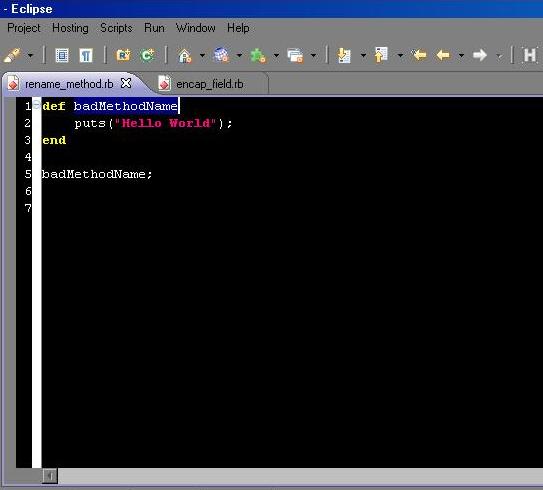 |
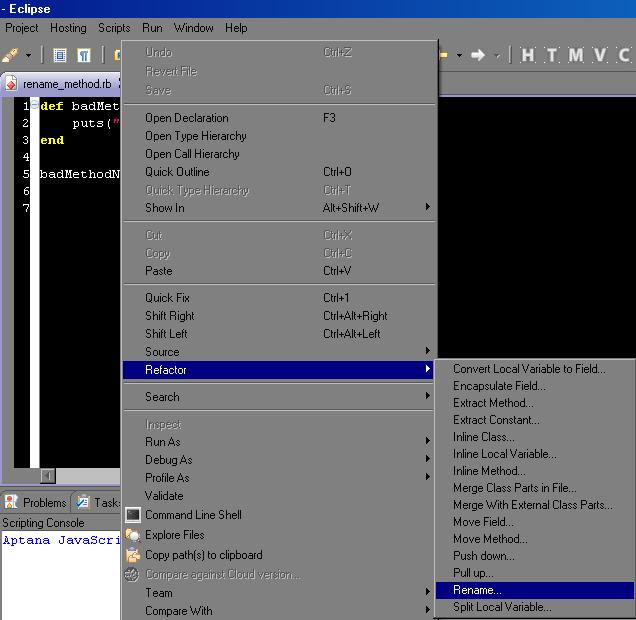 |
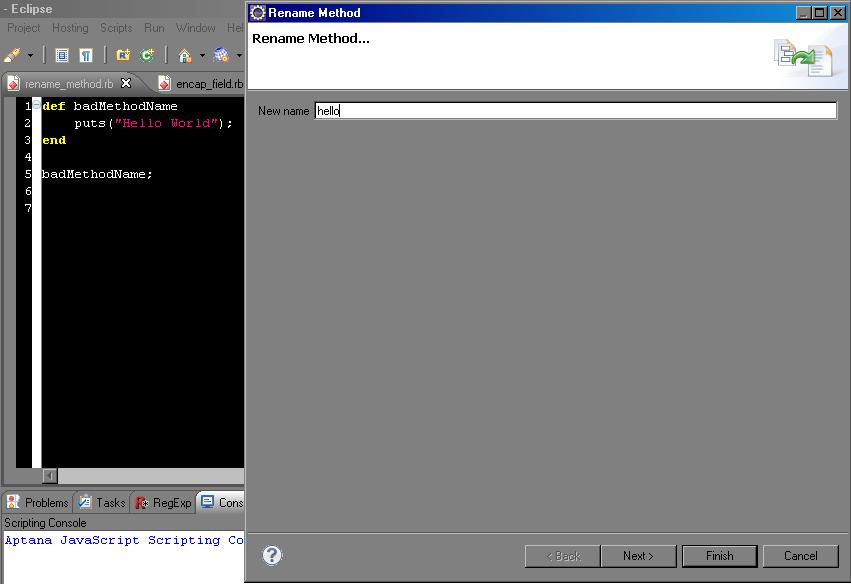 |
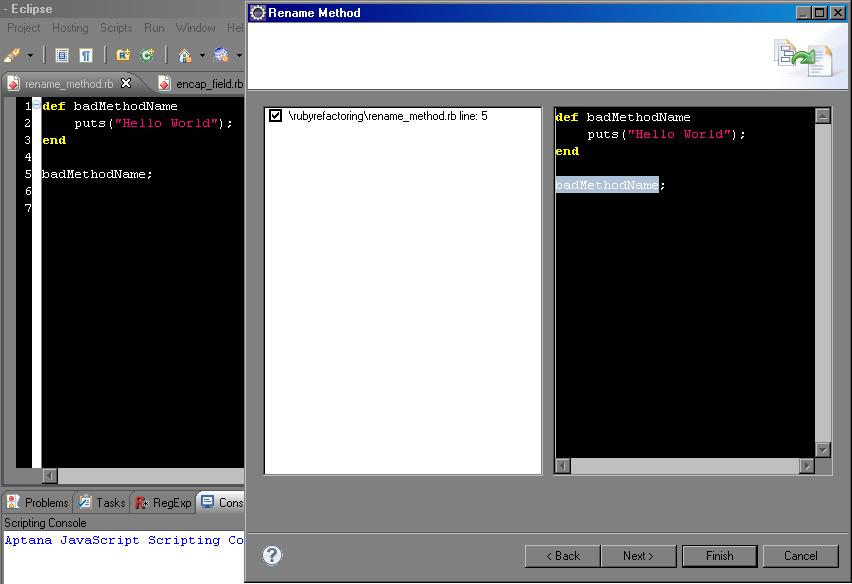 |
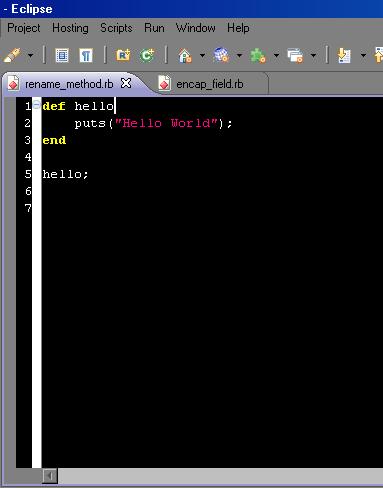 |
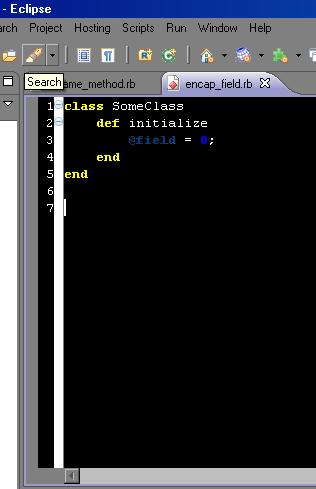 |
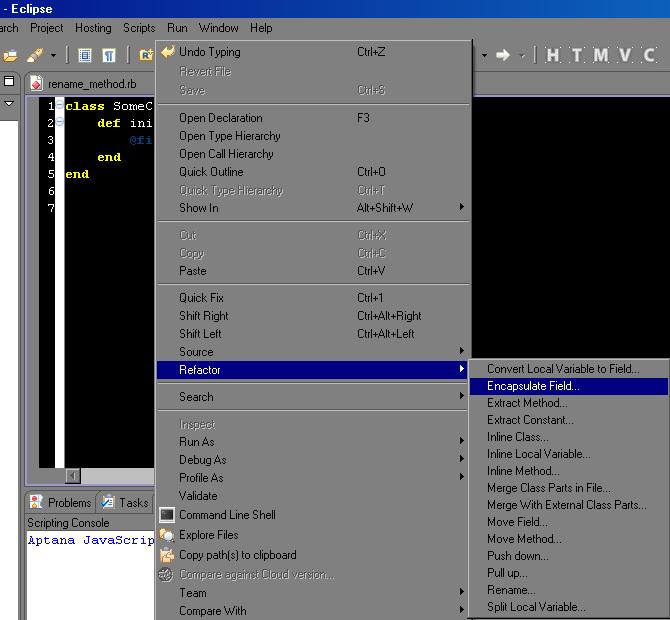 |
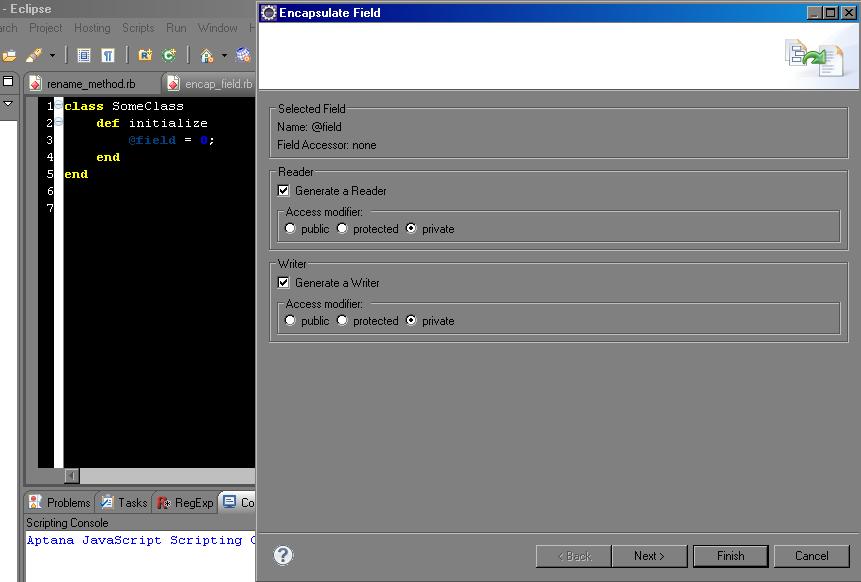 |
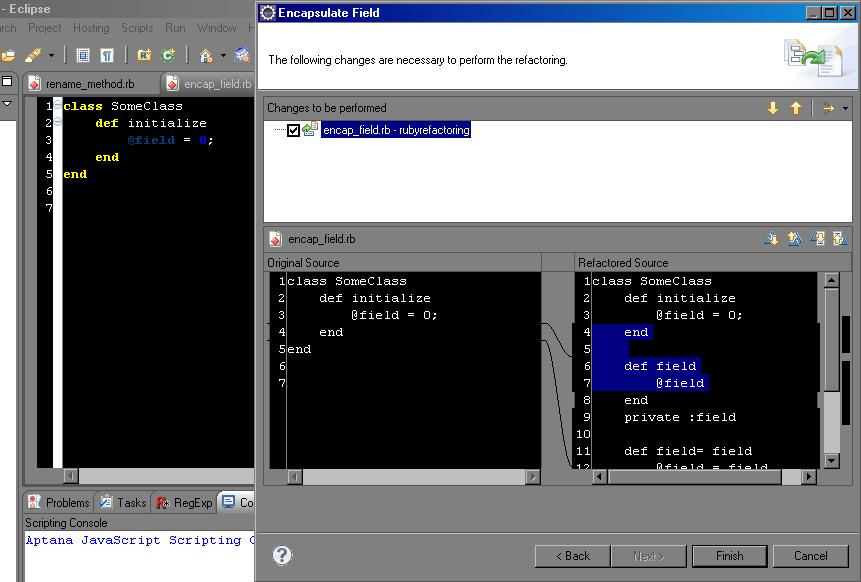 |
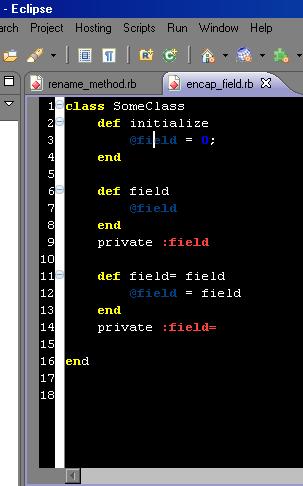 |
Example of Using Java Refactoring Tools in Eclipse
Here the renaming of the method "badRenameMethod" to "Hello" is illustrated for Java. The source code is show in section 1.4.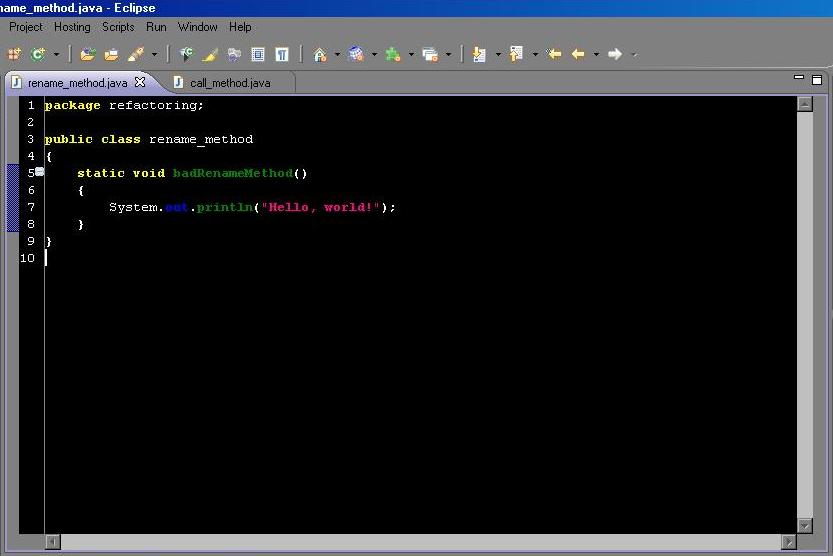 |
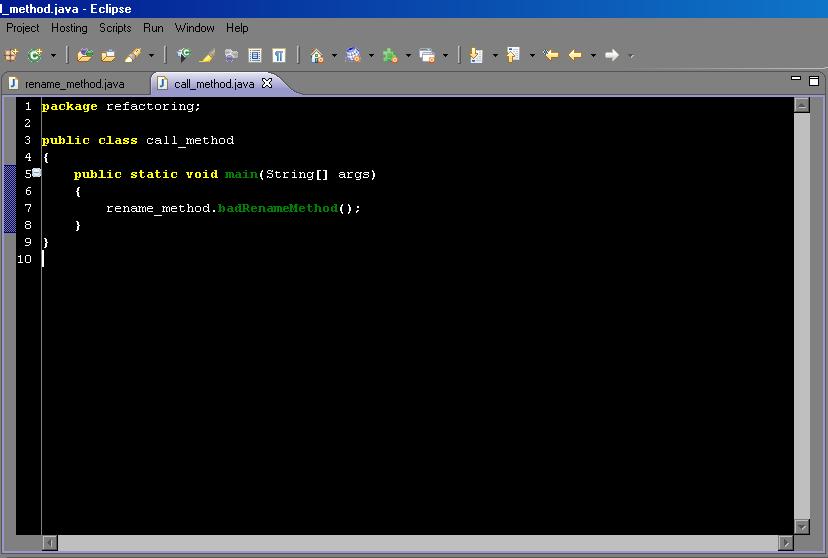 |
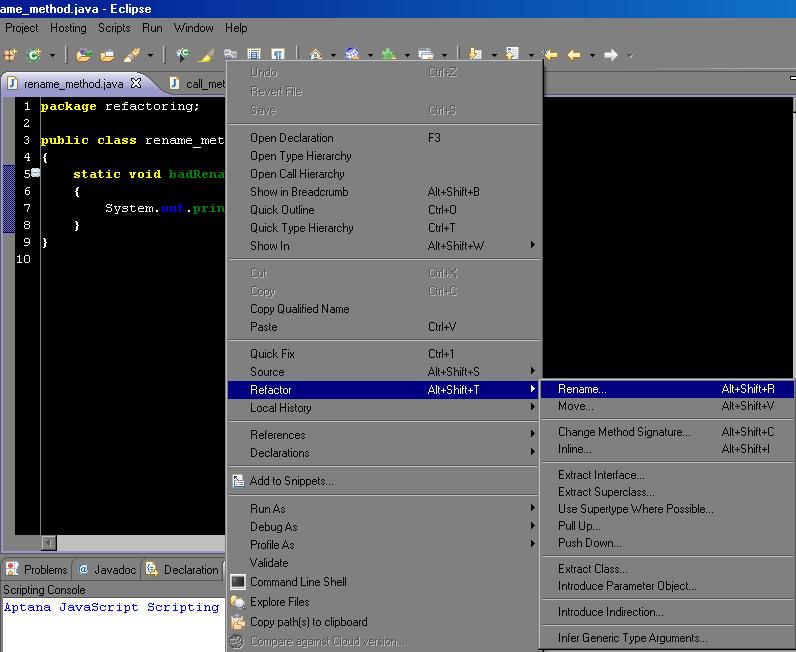 |
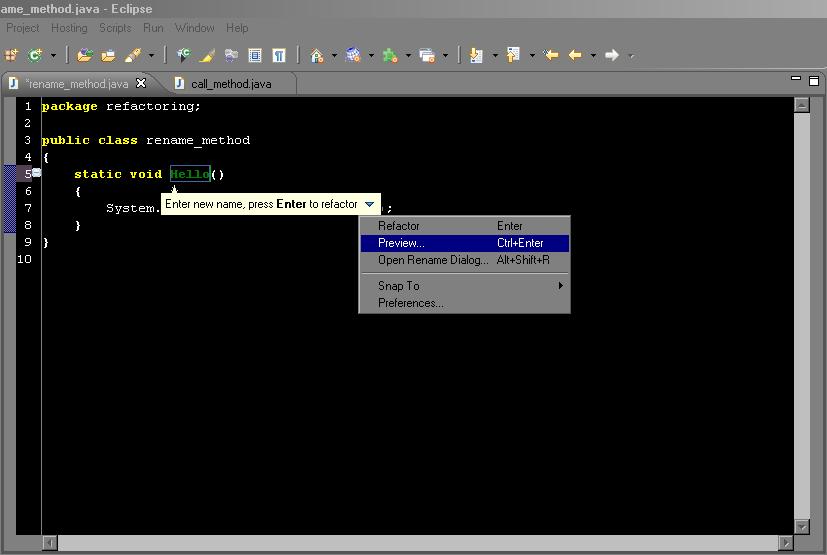 |
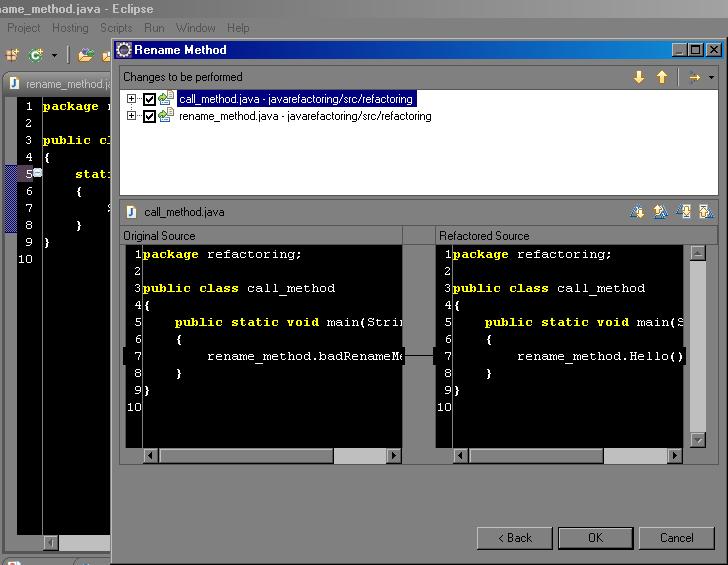 |
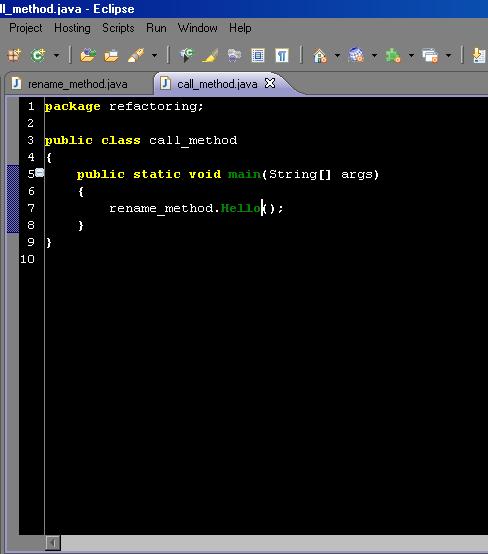 |
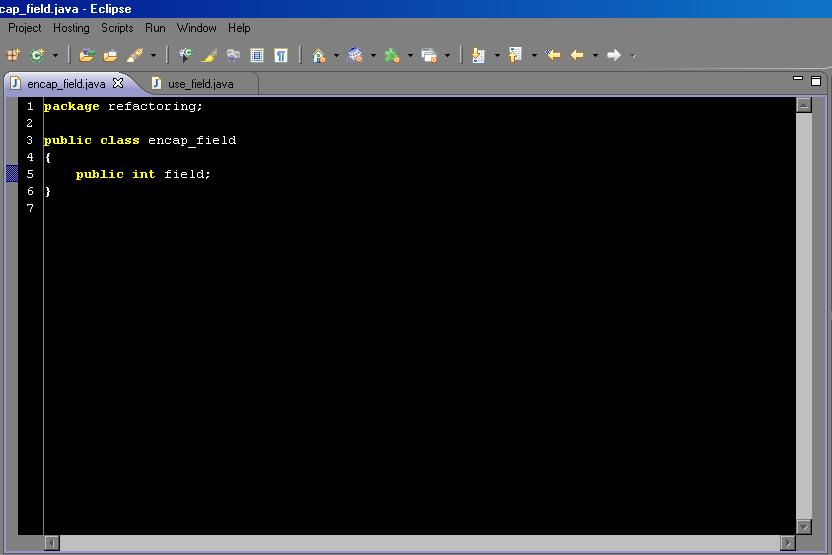 |
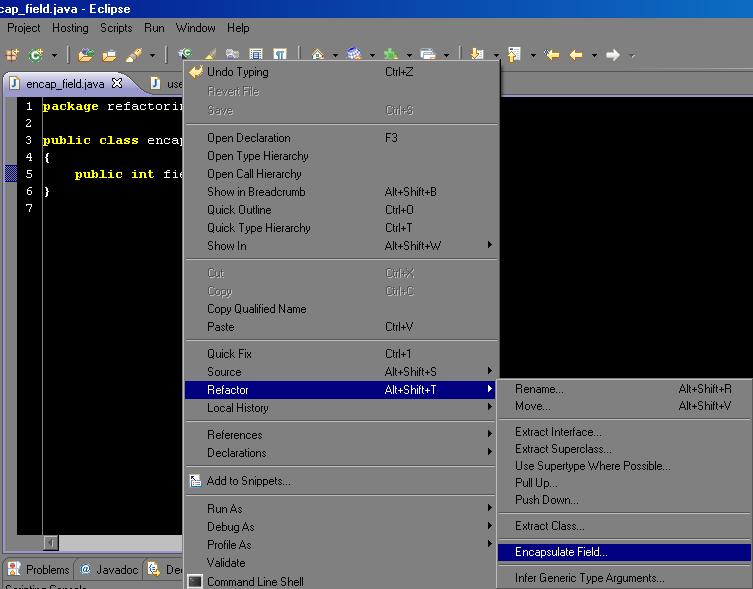 |
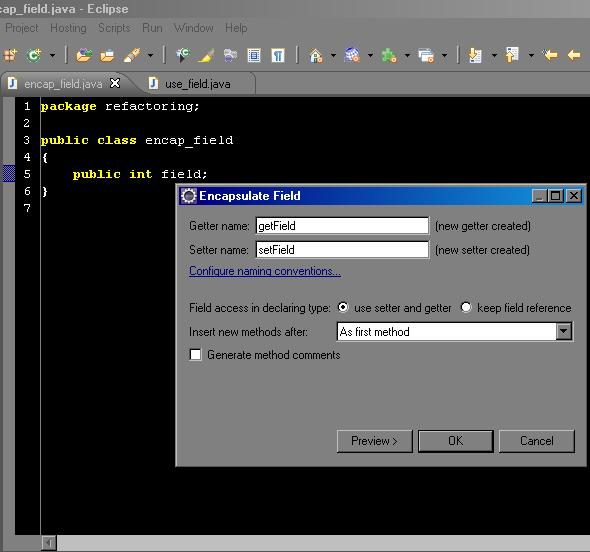 |
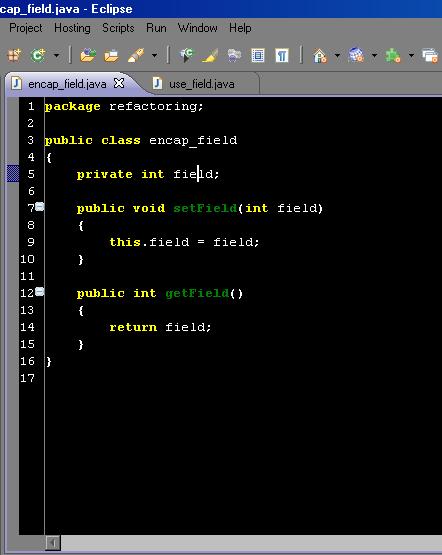 |
Comparison of Ruby and Java Refactoring Tools
Comprehensiveness
These are the following refactoring options available in eclipse for Ruby and Java.| Refactoring Options for Java in Eclipse | Refactoring Options for Ruby in Eclipse | |
| Rename | Rename | |
| Move | Move | |
| Change Method Signature | Merge Class Parts in File | |
| Extract Local Variable | Pull Up | |
| Extract Constant | Pull Down | |
| Inline | Merge With External Class Parts | |
| Convert Anonymous Class to Nested | Split Local Variable | |
| Convert Member to Top Level | Merge With External Class Parts | |
| Convert Local Variable to Field | Inline | |
| Extract Super Class | Extract Constant | |
| Extract Interface | Encapsulate Field | |
| Extract Class | Convert Local Variable to Field | |
| Use Supertype where possible | ||
| Pull Up | ||
| Pull Down | ||
| Introduce Parameter Object | ||
| Introduce Indirection | ||
| Introduce Factory | ||
| Introduce Parameter | ||
| Encapsulate Field | ||
| Generalize Declared Type | ||
| Infer Generic Type Arguments |